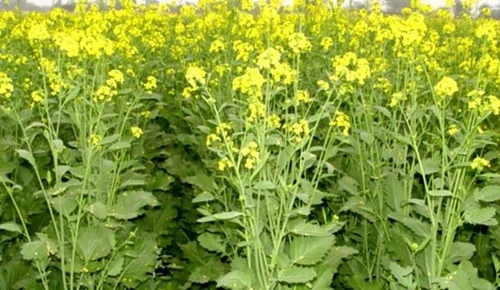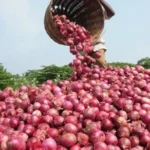Mustard, a key oilseed crop in India is widely produced for its several applications. It is widely cultivated for its seeds, which are processed to produce mustard oil, a staple in Indian kitchens, and for its use in spices and condiments. Mustard production is primarily concentrated in the northern and central parts of the country, where the climatic conditions are ideal for the crop. In 2025, several states have emerged as top contributors to mustard production. These states contribute the lion’s share of mustard production, ensuring the country’s oil demands are met.

1. Rajasthan
Rajasthan is the undisputed leader in mustard production, accounting for nearly 40-50% of India’s total mustard output. The state’s semi-arid climate and well-drained sandy loam soil provide optimal growing conditions for mustard, particularly in the Rabi season. Districts such as Bharatpur, Alwar, and Jhunjhunu are the main hubs of mustard cultivation. Mustard is a winter crop, sown from October to December and harvested in February and March. Rajasthan’s dominance in mustard farming is supported by a long tradition of oilseed farming, along with state government initiatives that encourage the use of high-yield varieties and modern agricultural practices.
2. Haryana
Haryana ranks second in largest mustard production in India. It contributes to around 15-20% of India’s total output in the production of mustards. The state’s fertile alluvial soil and strong irrigation infrastructure make it one of the most agriculturally advanced regions in the country. Mustard is a major crop in districts like Hisar, Bhiwani, and Sirsa in Haryana, where farmers utilize modern agricultural techniques and hybrid seeds to boost productivity. Haryana’s proximity to major markets also aids in the swift distribution of mustard products.
3. Madhya Pradesh
Madhya Pradesh, known for being a leading soybean producer, has also seen a steady rise in mustard cultivation. The state is contributing to about 12-15% of the country’s total mustard output. The districts of Morena, Bhind, and Gwalior are major centers of mustard farming. Bhind region climate is ideal for mustard production, and the mustard grown there is known for its high-quality oil. The state’s push toward diversification of crops and the use of better irrigation and crop management techniques have made it a fast-growing player in the mustard industry. Government support and farmer training programs have also played a crucial role in increasing mustard yields in Madhya Pradesh.
4. Uttar Pradesh
Uttar Pradesh, India’s most populous state is also a key player in leading mustard production. It is contributing around 10-12 per cent to the national mustard output. Mustard farming is concentrated in the western districts of the state, particularly in areas like Agra, Aligarh, and Mathura. The state’s agricultural diversity and the introduction of mustard as an alternative to water-intensive crops like sugarcane and rice have helped boost production. Additionally, state-supported initiatives focusing on better seeds and technology have increased overall mustard yields in the state.
5. West Bengal
West Bengal, traditionally known for its rice cultivation, has also become an important mustard producer, particularly in the northern parts of the state. The state contributes around 5 -7 per cent to India’s total mustard output. The mustard fields of Cooch Behar and Jalpaiguri are some of the most productive regions of the state. The fertile alluvial soil and favourable climatic conditions of the state contribute to high mustard production. West Bengal has seen a gradual increase in mustard cultivation as farmers seek to diversify away from traditional crops, bolstered by state programs promoting oilseed cultivation.
In Conclusion
India’s mustard production is crucial for meeting the country’s edible oil needs, with Rajasthan leading by a significant margin. States like Haryana, Madhya Pradesh, Uttar Pradesh and West Bengal are also important contributors of mustards in India. As the demand for mustard oil continues to rise due to its health benefits, these states will remain key players in boosting India’s agricultural economy. Furthermore, ongoing improvements in farming techniques and government support will likely increase mustard yields in the coming years. With rising demand for mustard oil, the future of mustard cultivation looks promising, particularly as more farmers adopt innovative methods to increase yield.
Parkash Singh is a PGT Teacher in Kendriya Vidyalaya Rohini, New Delhi. Parkash completed his starting education from Bihar Board and graduated from Babasaheb Bhimrao Ambedkar Bihar University. He regularly writes educational and informative articles at IndiasStuffs.com
Page Contents

